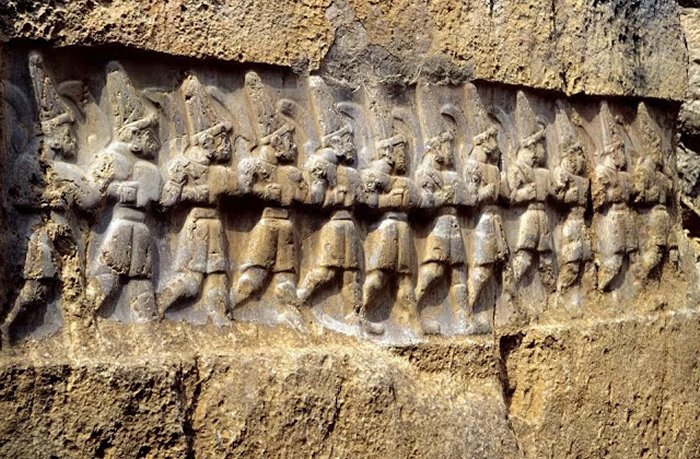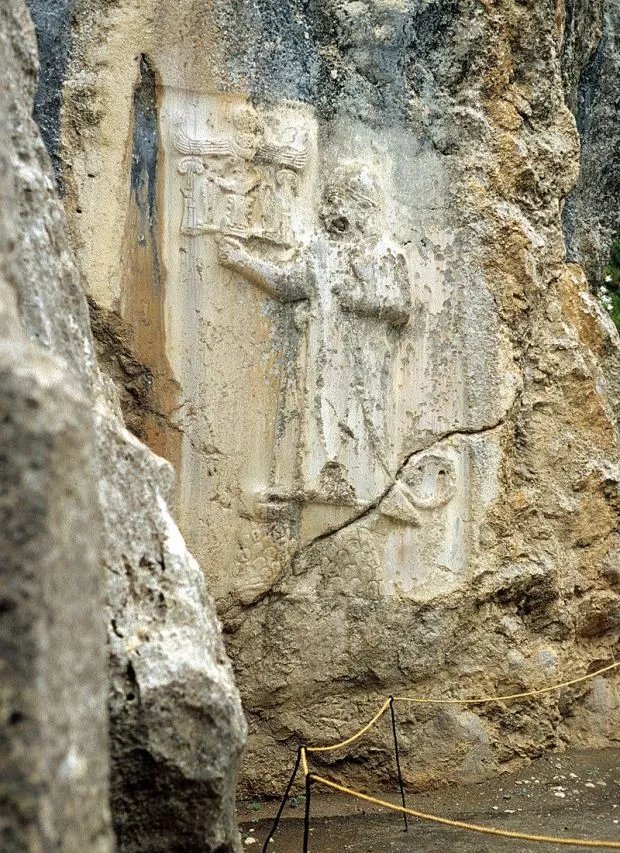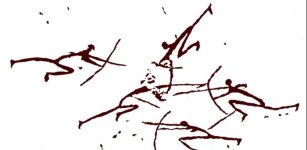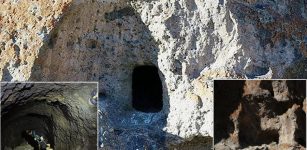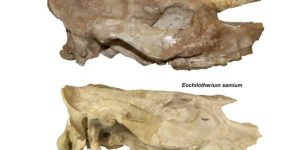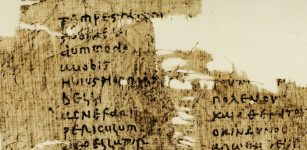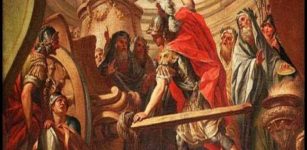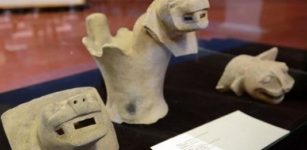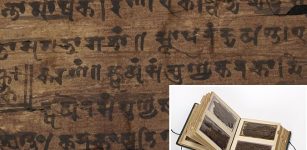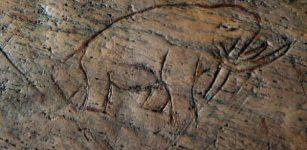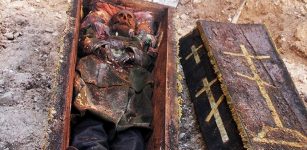Mysterious 3,200-Year-Old Hittite Map Of The Cosmos And The 12 Gods
Conny Waters - AncientPagaes.com - The Hittites studied the night sky with the same interest as any other ancient civilization. As previously reported on Ancient Pages, scientists suggested a secret, ancient lunar calendar is hidden at a Hittite sanctuary in Turkey.
This carving at Yazilikaya is said to depict 12 gods of the underworld. Credit: Public Domain. Credit: Klaus-Peter Simon - CC BY 3.0
Experts examined several intricate carvings in Hattusha, the old capital of the Hittites, and announced these ancient people had astronomical knowledge ahead of their time.
The Hittites were a powerful civilization that occupied the ancient region of Anatolia.
This long-gone culture has been of great interest to archaeologists and historians but unraveling the truth about the Hittites has been a difficult task.
Knowledge about their activities has been documented on cuneiform tablets, one of the earliest systems of writing invented by the Sumerians.
Magnificent ancient ruins found at sites such as Yazilikaya and Hattusha testify to the greatness of this once-powerful civilization.
The famous rock sanctuary of Yazilikaya , which is an open-air temple with two natural chambers cut into the bedrock, lies 2 km northeast of the capital, on a slope of a mountain barrier. The walls of the rock chambers are covered with the richest and most striking samples of Hittite relief art, featuring gods and goddesses and the figures of the Great King Tuthaliya IV. Credit: Murat Özsoy - CC BY-SA 4.0
According to some experts, the true meaning of the mysterious ancient carvings at the Hittite sanctuary may have been overlooked.
A new study published in the Journal of Skyscape Archaeology sheds more light on the 3,200year-old Hittite enigmatic carvings.
The Hittite temple was discovered initially in 1834 by a French archaeologist and historian, Charles Texier. Still, scientists have been unable to decipher the symbolism behind the engraved signs, monsters, animals, and gods.
In 2019, Eberhard Zangger, president of Luwian Studies, an international non-profit foundation, and his colleague Rita Gautschy from the University of Basel said that one carving containing 12 deities depicts the months a year and another containing 30 represents the days in a month.
The researchers have now conducted an in-depth study of the celestial aspects of the Hittite religion with a focus on cosmic symbolism at Yazilikaya.
According to the theory presented in this new study, the 3,200year-old rock art provides insight into how the people of the Hittite kingdom understood the cosmos. The Yazilikaya rock sanctuary was an important religious site. The open-air shrine served as an extension of the city’s sacred power. It “formed a knot tying the country to the sky,” the science team explained in their study.
“Evidence of systematic astronomical observation and the impact of celestial knowl-edge on culture is plentiful in the Bronze Age societies of Egypt, Mesopotamia and Europe. An interest in astral phenomena is also reflected in Hittite documents, architecture and art. The rock-cut reliefs of 64 deities in the main chamber of Yazilikaya, a Hittite rock sanctuary associated with Hattuša, the Hittite capital in central Anatolia, can be broken into groups marking days, synodic months and solar years,” the team wrote in the science paper.
Examination of the 3,200year-old carving reveals that the Hittite believed the Universe was a multilayered system composed of three levels or realms, including the Earth (the surface world) and the sky (the celestial world) and the subterranean Underworld.
Some of the carvings are now quite faded leading some experts to believe that evidence of what the site was used for may have been missed. Credit: China_Crisis - CC BY-SA 2.5
“We suggest that the sanctuary in its entirety represents a symbolic image of the cosmos, including its static levels (earth, sky, Underworld) and the cyclical processes of renewal and rebirth (day/night, lunar phases, summer/winter). Static levels and celestial cyclicities are emphasised throughout the sanctuary – every single relief relates to this system. We interpret the central panel with the supreme deities, at the far north end of Chamber A, as a reference to the northern stars, the circumpolar realm and the world axis. Chamber B seems to symbolise the netherworld,” the researchers explain.
According to this study, “the reliefs in Chamber A are arranged in groups that may keep track of and display days, synodic months and solar years. Intercalary months could have been introduced intermittently to synchronise the Moon with the solar year.”
“We suggest that Chamber A as a whole can be viewed as symbolizing everything on Earth and in heaven, including the Sun, the Moon, the five visible planets, some constellations and stars, the north celestial pole, and the northern circumpolar realm,” the researchers explain.
Chamber B may represent the Underworld. Lion-headed demons guard the entrance and the main relief depicts the 12 gods of the Underworld, each carrying sickle-shaped swords. There is also an 11-foot-high relief depicting Nergal, the goddess of the Underworld who was in many aspects similar to Irkalla, the Babylonian goddess of the Land of the Dead.
The meaning behind the 12 gods still remains a subject that must be further investigated. One theory proposes the each of the 12 similar male gods marching in line in Chamber B are “an indicator of a synodic month, the time from one New Moon to the next, and the number 12 approximates the number of complete synodic months in a year. Another study has suggested that several of the deities depicted in Chamber A possess an astral character.
Yet, despite the recent surge of stimulating insights into celestial concerns of Hittite religion, the total amount of available information is still so scarce that current and future research will inevitably have to rely on the methodology of comparative archaeology and use the vast amount of knowledge regarding archaeoastronomical aspects that has been accumulated over the past century and a half of research on Mesopotamia and Egypt.
See also: More Archaeology News
It is well established that the royal courts of these imperial kingdoms were in close contact and that there was cultural exchange; for instance, priests from Babylon were practicing their religion and teaching their peers in Hattuša.
Hence, it is legitimate to presume that the elite of the society was quite aware of religious practices abroad,” the researchers said.
Parts of the mysterious 3,200-year-old Hittite rock carving appear to have been deciphered. However, some questions still remain unanswered, and clues to those can most likely be found in the religious practices of the ancient Egyptians, Babylonians, or people of Mesopotamia.
Written by Conny Waters - AncientPages.com Staff Writer
Expand for references
